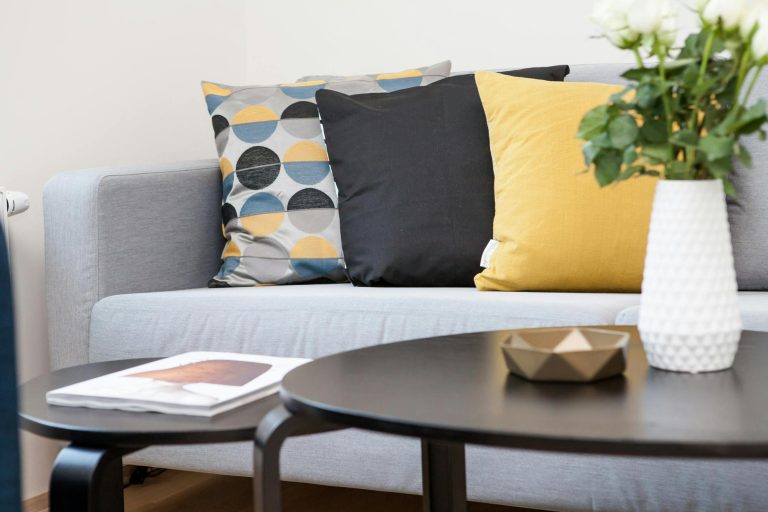
Understanding Architectural Model Making
Architectural model making is a significant aspect of the architectural and design industries. It serves as a fundamental tool for visualizing and realizing concepts before they are transformed into actual buildings or structures. An architectural model maker Leipzig plays a pivotal role in this process, offering services that help architects communicate their designs effectively.
What is an Architectural Model?
Architectural models are physical representations of structures and designs, ranging in scale from small conceptual models to large presentations. They can be made from various materials, including cardboard, wood, plastic, and acrylic, and serve multiple purposes throughout the design and presentation phases of a project. Whether it’s for client meetings, marketing materials, or installation in exhibitions, these models provide a tangible way to explore architecture and design.
Importance of Models in Architectural Design
The significance of architectural models lies in their ability to bring abstract ideas into a comprehensible form. They help in:
- Visualizing Concepts: Models enable architects and clients to see how a proposed design translates into three-dimensional space.
- Identifying Design Flaws: Early-stage models can highlight potential issues that might not be evident in two-dimensional plans.
- Facilitating Communication: Models serve as a common ground for discussions among architects, clients, and stakeholders.
- Assisting in Marketing: Well-crafted models can enhance marketing efforts by showcasing a project’s highlights to potential investors or clients.
- Engaging Stakeholders: Having a physical model can engage local communities and stakeholders, allowing for feedback that can improve the design.
Key Materials Used in Model Making
The choice of materials is crucial for an architectural model maker, influencing the model’s quality and the message it conveys. Some commonly used materials include:
- Cardboard: Excellent for quick, low-cost prototypes.
- Foam Board: Lightweight and easy to cut, ideal for detailed and precision work.
- Acrylic Sheets: Used for durable and transparent model elements.
- Wood: A classic choice for structural integrity and aesthetic quality, allowing for intricate details.
- 3D Printing Materials: Resin or filament used in modern CAD processes for high detail and accuracy.
Choosing the Right Architectural Model Maker in Leipzig
Finding the right architectural model maker is critical to the success of any project. Several factors should be considered when selecting a professional in Leipzig:
Evaluating Experience and Expertise
When selecting an architectural model maker, one must evaluate their experience and expertise. A seasoned model maker brings invaluable insights into the complexities of different materials and techniques. Look for professionals with a proven track record in:
- Types of models (conceptual, presentation, etc.)
- Knowledge of architectural nuances specific to Leipzig’s unique architecture
- Experience with various projects, including residential, commercial, and urban design models
Project Portfolios and Client Testimonials
A reputable architectural model maker will have a portfolio showcasing their previous works. Review this portfolio to get a sense of their style, quality, and range of capabilities. Client testimonials can also provide insight into their professionalism, the satisfaction of previous clients, and the effectiveness of their communication. Ask for referrals and take the time to reach out to past clients for feedback.
Assessing Customization Options
Every project is unique, and therefore, the ability to customize your architectural model is vital. Discuss your specific needs and expectations with potential model makers to see how they can tailor their services. Assess their flexibility in:
- Incorporating specific design elements from your projects
- Adjusting to changes in design and feedback loops during the model-making process
- Offering variations in material choices and construction techniques
Common Types of Architectural Models
Architectural models can be classified into three main categories, each serving different purposes throughout a project’s lifecycle:
Conceptual Models: Early Stage Visualization
Conceptual models are often the first step in the design process, helping architects visualize initial concepts and ideas. These models typically focus on the overall form and spatial relationships, rather than intricate details. They are essential for exploring various design options before committing to a final direction.
Presentation Models: Showcasing Final Designs
Once a design is finalized, presentation models come into play. These models are typically more detailed and polished, showcasing the project’s exterior and interior features in a visually appealing manner. Skilled model makers will ensure that these models represent the materials and colors accurately to provide a realistic preview of the finished project.
Working Models: Functional Prototyping
Working models represent functional aspects of a project. They are often used to study the practicalities of a design, such as structural integrity and mechanical systems. These models allow architects and engineers to test and refine their designs, ensuring that everything functions as intended before actual construction begins.
The Process of Creating Architectural Models
The process of creating architectural models involves several key stages, each contributing to the quality and success of the resulting model:
Initial Consultation and Design Planning
The first step is to consult with the client to understand their vision, requirements, and any specific challenges associated with the project. This stage includes:
- Gathering relevant materials and documents, including blueprints and sketches.
- Discussing the intended purpose of the model and its audience.
- Setting timelines and budget constraints.
Material Selection and Construction Techniques
With the planning complete, the next stage is selecting materials that will achieve the desired visual and functional outcomes. Different models will require different techniques, such as:
- Laser cutting for precision.
- Hand carving for intricate details.
- 3D printing for complex geometries.
Model makers must consider factors like durability, cost, and the intended level of detail during this phase.
Finishing Touches and Presentation Strategies
Once the primary construction is complete, finishing touches are essential for creating a professional model. This might include painting, applying textures, and integrating lighting elements. Presentation strategies might involve:
- Creating an attractive base or stand for the model.
- Providing complementary graphics or digital renderings to enhance the presentation.
High-quality finishes can elevate a model’s impact, making it a more powerful tool for communication and marketing.
Cost Factors in Architectural Model Making
Understanding the costs involved in architectural model making is vital for effective budgeting. Several factors influence the overall expense of commissioned models:
Estimating Costs by Model Type
Model costs can vary significantly depending on the type, complexity, and scale of the project. For example:
- Conceptual models can start as low as €500, depending on size and materials.
- Presentation models commonly range from €1,000 to €10,000, depending on design intricacies.
- Working models, especially those that require mechanical components, can exceed €10,000.
Timeframes and Budgeting Considerations
Timeframes for creating models can also vary. Considerations include the model type, the complexity of the design, and the materials used. Generally, simpler models can be completed within a few weeks, while intricate models can take several months. Budget discussions should factor in these timelines, allowing for any unforeseen challenges that might arise during the their creation.
Value of Investing in Quality Models
Investing in high-quality architectural models can pay dividends in several ways. Quality models enhance presentations, facilitate better client communication and reviews, and even improve overall design outcomes. They can ultimately save time and costs in the construction phase by mitigating potential issues highlighted during the model review.
In conclusion, selecting a proficient architectural model maker in Leipzig is a crucial step in ensuring the success of your architectural project. By understanding the various aspects of model building, from the importance of architecture models to the selection process, you can make informed decisions that lead to impactful outcomes. As the architecture industry continues to evolve, the role of model makers remains integral to bridging the gap between design concepts and tangible reality.



